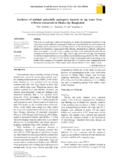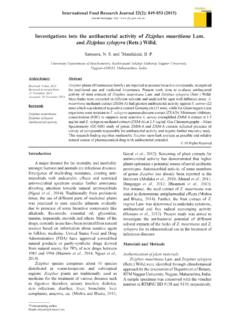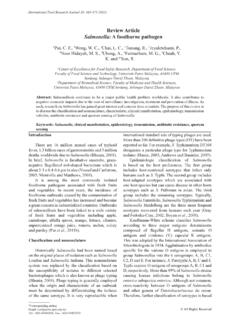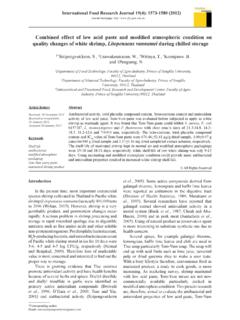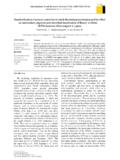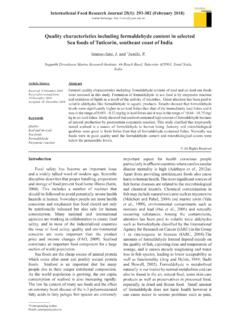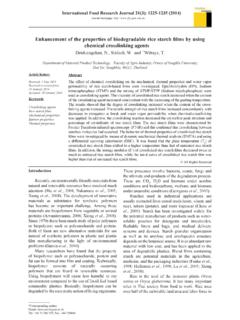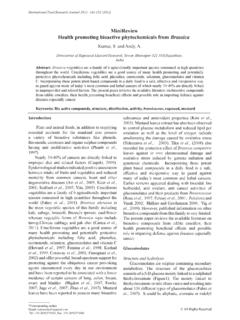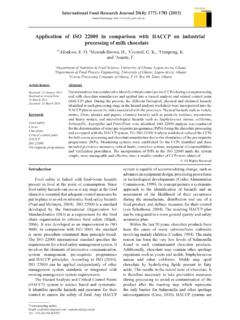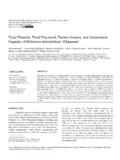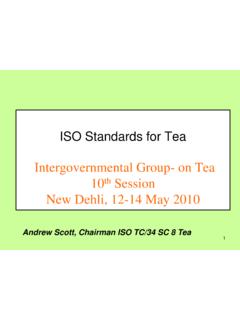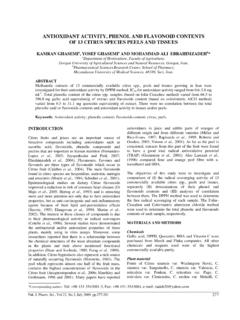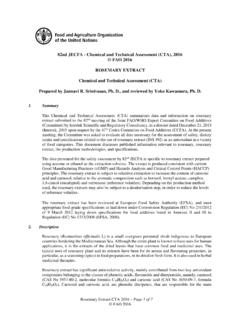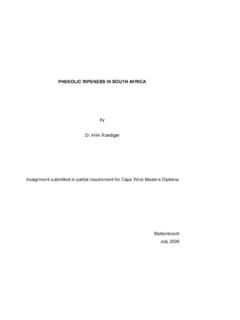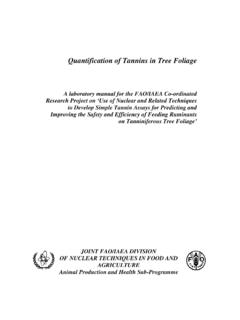Transcription of Phytochemical content and antioxidant properties …
1 All Rights Reserved*Corresponding author. Email: Tel: +62 82231939278; Fax: +62 431 321866 International Food Research Journal 21(3): 1053-1059 (2014)Journal homepage: , E. M., 2 Purnomo, H., 3 Kusnadi, J. and 4 Ijong, F. Gradute Program, Faculty of Agriculture Brawijaya University and Department of Biology, Faculty of Natural Science and Mathematics, Manado State of University, Manado, 95618, North Sulawesi, Indonesia2 Department of Animal Food Technology, Faculty of Animal Husbandry, Brawijaya University, Malang, 65145, East Jawa, Indonesia3 Department of Food Technology, Faculty of Agricultural Technology, Brawijaya University, Malang, 65145, East Jawa, Indonesia4 Department of Fisheries Products Technology, Faculty of Fisheries and Marine Science, Sam Ratulangi University, Manado, 95115.
2 North Sulawesi, IndonesiaPhytochemical content and antioxidant properties of colored and non colored varieties of rice bran from Minahasa, North Sulawesi, IndonesiaAbstractTwo non colored and one colored rice varieties from Minahasa Regency, North Sulawesi, Indonesia were analyzed to determine the phytochemicals and antioxidant properties as natural antioxidant sources. Different brans of rice varieties divided into two groups: red rice and non colored (Superwin and Cigeulis) were macerated by ethanol (70%) and extracted with organic solvents (butanol, ethyl acetate and hexane).
3 antioxidant properties were determined by means of radical, 1,1-diphenyl-2-picrylhydrazyn (DPPH) assay, total phenol content (TPC), total anthocyanin content , and thiobarbituric acid (TBA) assay. The Phytochemical analysis indicated rice bran crude extracts contained phenolic , flavonoid, alkaloid, triterpenoid, steroid and saponin compounds. Red variety had the highest DPPH scavenging radical activity ( ), with the lowest IC50 value ( g/ml) and highest total anthocyanin content ( mg/g). The colored varieties had better antioxidant properties than non colored varieties.
4 It can be concluded that colored varieties could be used as a natural antioxidant bran is one of the most abundant co-products produced in the rice milling industry. Rice consumption in Indonesia is higher than the others commodities, and making Indonesia as the largest producer in the world after China and India (FAOSTAT, 2013). Rice bran has been recognized as an excellent source of vitamins and minerals, but has been under-utilized as human food and has traditionally been used primarily in animal feeds. Research conducted in the last two decades has shown that it contains a unique complex of naturally occurring antioxidant compounds (Moldenhauer et al.)
5 , 2003).Rice bran as a waste product of paddy milling contained protein, carbohydrate, dietary fiber, ash, fat, vitamin, mineral and natural antioxidant compounds (Chen et al., 2008; Saenjum et al., 2012). Rice bran also contains Phytochemical compounds in significant amount and these compounds have been considered as natural antioxidant . Rice bran oil according to Xu and Godber (1999) and Chen et al. (2008) contained saponified lipid such as glycolipid and phospholipid and unsaponified lipid such as tocopherol, tocotrienol, -oryzanol, sterol and Phytochemical compounds would accumulate in the pericarp and testa or bran of the rice kernel.
6 Amongst rice varieties there are rice varieties that contain color pigments. The cultivars of pigmented rice have a long history for human consumptions, especially in South East Asia (Hu et al., 2003). These compounds are pigment containing related to distinct colors such as red, purple and black. antioxidant activities of paddy varieties containing colour pigments such as red Thai, black rice, red brown and dark purple had been intensively studied by Muntana and Prasong (2010) and Yodmanee et al. (2011), and they reported that rice with non color pigments contained lower phenolic content and antioxidant activities.
7 Many studies have reported that black rice contains rich of anthocyanin and other polyphenolic compounds more abundantly than white rice (Ryu et al., 1998; Zhang et al., 2006). Furthermore, it has been reported that colored rice varieties contains more KeywordsRice branColored riceNon colored rice PhytochemicalsAntioxidant propertiesArticle historyReceived: 10 October 2013 Received in revised form: 9 December 2013 Accepted: 13 December 20131054 Moko et 21(3): 1053-1059phenolic compounds and exhibits higher antioxidant activity than white rice varieties (Fujita et al., 2010; Muntana and Prasong, 2010; Sompong et al.)
8 , 2011).Previous research about antioxidant properties in colored rice bran indicated that rice bran with certain color that contains anthocyanin has a reductase enzyme inhibitory and anti diabetic activity (Yawadio et al., 2007; Kim et al., 2008; Park et al., 2008). Further studies reported that dark purple rice variety had higher iron, polyphenol and antioxidant properties than the red rice variety, while red rice contains higher phenolic compounds. It has also been reported that black rice has a scavenging activities higher than red rice variety, while non colored rice had phenolic content and antioxidant activities which are lower than the colored rice variety (Muntana and Prasong, 2010; Yodmanee et al.
9 , 2011). However, no study had been reported on the Phytochemical compounds and antioxidant properties in colored and non colored native rice bran from Minahasa, North Sulawesi, Indonesia. Therefore, the objective of this study was to determine the Phytochemical compounds and antioxidant properties in the crude extract of colored and non colored varieties of rice bran from Minahasa Regency, North Sulawesi, Indonesia and to uncover its potential as a natural antioxidant source. Material and MethodsPreparation of rice bran samplesMinahasa rice varieties used in this study were non colored rice (Superwin and Cigeulis) and colored rice (Red variety).
10 All samples were obtained from the fields of Minahasa Regency, North Sulawesi and milled to obtain the rice bran flour. The fresh milled bran samples were collected immediately from the milling system in polyethylene bags. Stabilization of rice bran was carried out according to the previous method reported by Malekian et al. (2000) with a slight modification. Each sample was packed in polyethylene bags and heated in autoclave for 3 min at 120oC and then cooled down to room temperature overnight. The sample were then stored at 4oC in refrigerator for further analysis.
